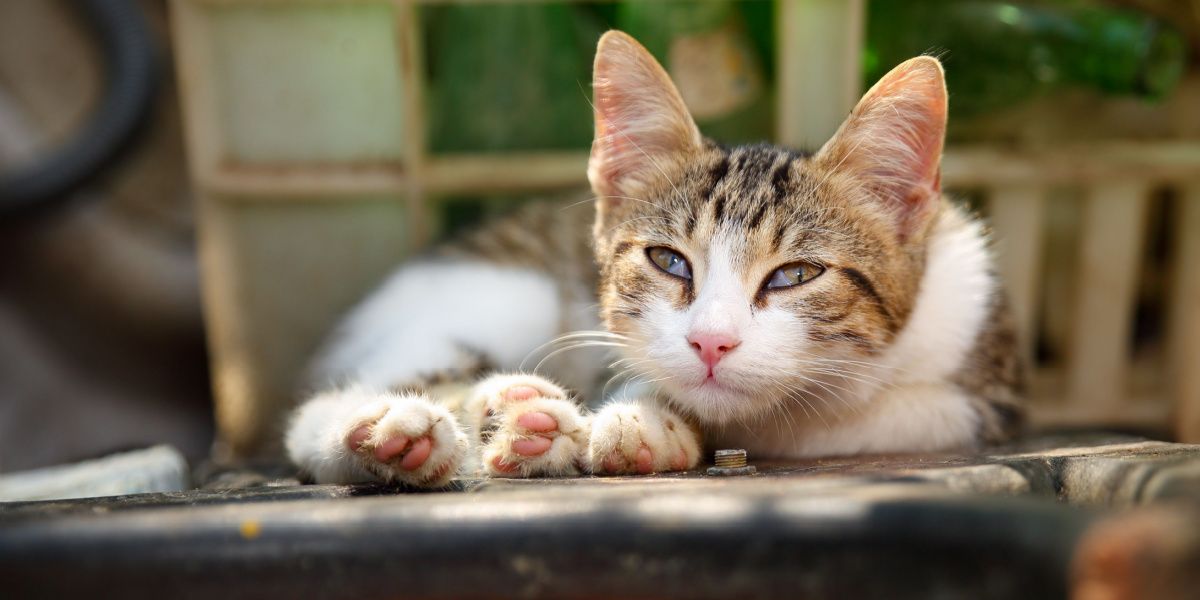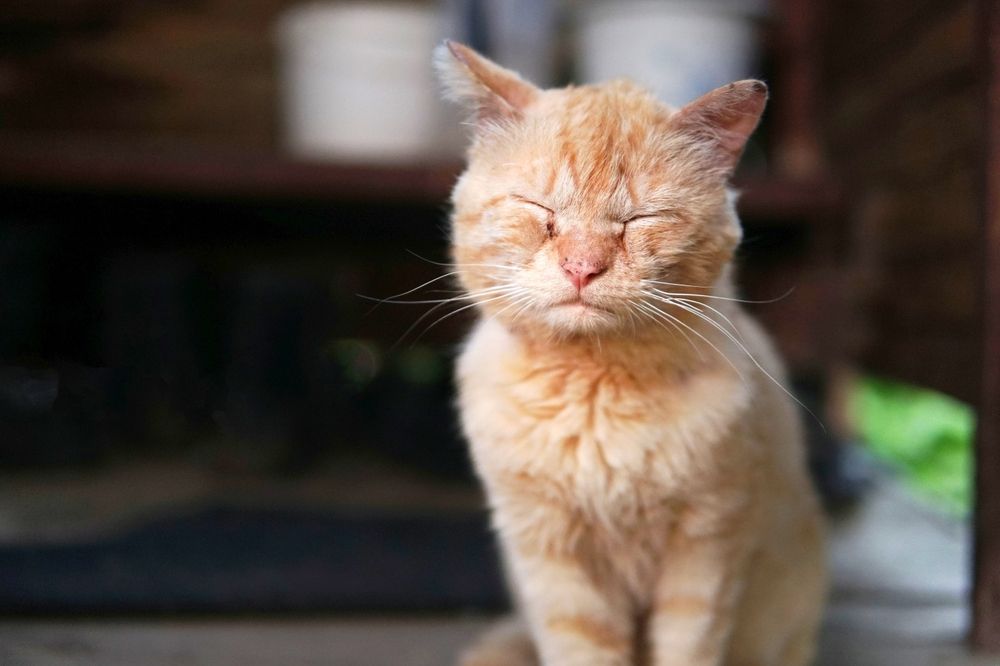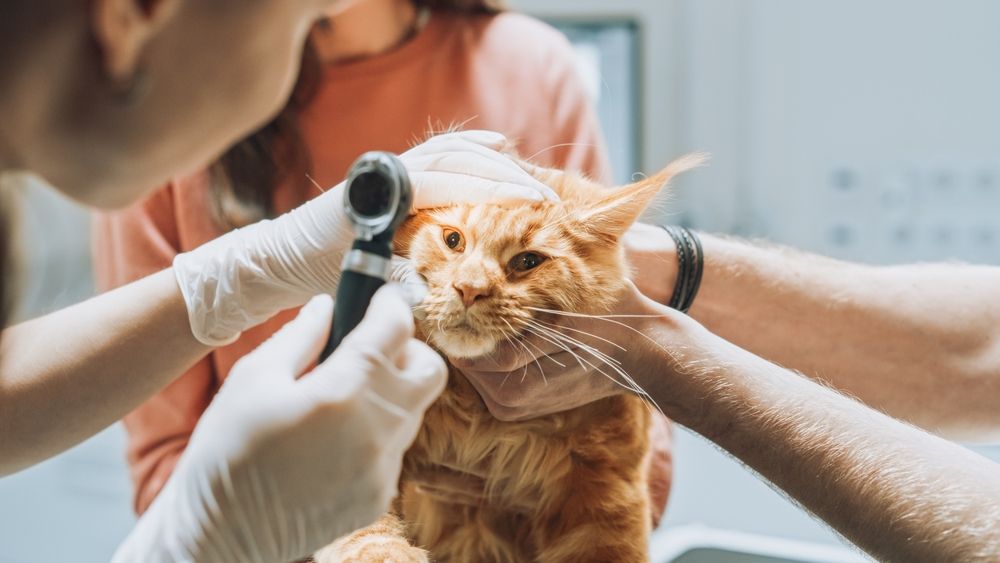
Mahlebashieva / Shutterstock.com
“Cherry eye” is the colloquial term that is used to describe a rare eye problem in cats that is correctly called “third eyelid gland prolapse“ or “prolapsed gland of the nictitating membrane“. This article will explain the details of cherry eye in cats and make it easier for pet carers to understand how to help cats suffering from this condition.
Quick Overview: Cherry Eye in Cats
 Urgency: This is an unsightly problem, but it is not an immediate emergency. If you notice this after-hours, it is safe to wait until your regular vet reopens during normal working hours.
Urgency: This is an unsightly problem, but it is not an immediate emergency. If you notice this after-hours, it is safe to wait until your regular vet reopens during normal working hours.
 Home Remedies: There are no effective home remedies.
Home Remedies: There are no effective home remedies.
 Vaccine Available: There is no vaccine available.
Vaccine Available: There is no vaccine available.
 Treatment Options: The only effective treatment is a surgical procedure by a veterinarian. There are several possible techniques, and you should discuss the options with your veterinarian.
Treatment Options: The only effective treatment is a surgical procedure by a veterinarian. There are several possible techniques, and you should discuss the options with your veterinarian.
 May be Linked to: Dry eye (keratoconjunctivitis sicca) can sometimes develop as a complication of cherry eye.
May be Linked to: Dry eye (keratoconjunctivitis sicca) can sometimes develop as a complication of cherry eye.
 Diagnosis: The diagnosis can be made from the appearance of an affected cat's eyes, but this should be confirmed by a physical examination by a veterinarian.
Diagnosis: The diagnosis can be made from the appearance of an affected cat's eyes, but this should be confirmed by a physical examination by a veterinarian.
 Requires Ongoing Medication: Once the cherry eye has been surgically treated, there is no need for ongoing medication unless the cat develops a complication such as dry eye, in which case artificial tears may need to be regularly applied.
Requires Ongoing Medication: Once the cherry eye has been surgically treated, there is no need for ongoing medication unless the cat develops a complication such as dry eye, in which case artificial tears may need to be regularly applied.
 Common Symptoms: The appearance of a fleshy red mass in the inner corner of one or both eyes.
Common Symptoms: The appearance of a fleshy red mass in the inner corner of one or both eyes.
 Other Names: “Cherry eye” is correctly called “third eyelid gland prolapse“ or “prolapsed gland of the nictitating membrane“
Other Names: “Cherry eye” is correctly called “third eyelid gland prolapse“ or “prolapsed gland of the nictitating membrane“
 Diagnosed in Cats: This is rare in cats (it's far more common in dogs).
Diagnosed in Cats: This is rare in cats (it's far more common in dogs).
 Home Treatment: No home treatment is available.
Home Treatment: No home treatment is available.
What Is Cherry Eye?
To understand cherry eye, you need to know about the anatomy of the eye in cats. While humans only have two eyelids (upper and lower), cats have a third eyelid, known as the nictitating membrane.
This third eyelid is located in the inner corner of the eye and it is normally hidden from view. When a cat blinks, this third eyelid shoots across the surface of the eye from side to side, wiping the surface of the eye clean. This happens when the upper and lower eyelids are closed so it is hard to see.
The third eyelid has three parts:
- A t-shaped piece of cartilage.
- This is covered by a glove-like film of conjunctival tissue, the pink fleshy membrane that lines the eye.
- At the base of the cartilage, there is a small gland of the third eyelid that produces tears. This gland produces around one-third of the watery secretions that make up a cat’s tears, so it’s an important part of the system that keeps eyes moist and well-lubricated.
In cherry eye, the support structures that hold this tear gland in place stop working, and the gland “pops” out of its normal position so that it appears as a small oval or spherical red mass at the inner corner of the eye. It resembles a small cherry, which is why the condition is referred to as “cherry eye”.
Causes of Cherry Eye in Cats
Cherry eye is rare in cats, while it’s far more common in dogs. It is not known what causes cherry eye, although there may be a genetic element. It is seen more often in Burmese cats, and it has been reported in Persians as well as domestic short-haired cats.
The genetic cause is supported by evidence from the dog world, where the problem is more common in specific dog breeds such as Shih Tzus, Lhasa Apsos, Boston Terriers, English Bulldogs, Cocker Spaniels, Beagles and Bloodhounds.
In cats, cherry eye is seen more commonly in kittens and young adult cats (less than six years of age) although it can be seen in cats of any age.
Signs of Cherry Eye in Cats

Pogodina Natalia / Shutterstock.com
Affected cats have an obvious red mass protruding from the inner corner of one or both eyes. There aren’t always other symptoms, although sometimes inflammation, irritation, and infection of the prolapsed gland can lead to the swelling getting even bigger. This causes discomfort and a discharge from the corner of the eye.
Diagnosis
A provisional diagnosis can be made from the unusual appearance of a cat with cherry eye. Affected cats should be taken to their veterinarian, who will carry out a full ocular examination—checking the structures around the eyes and examining the eyes in detail.
They will confirm the diagnosis and see if there are other underlying issues going on. Your local vet may recommend referral to a veterinary ophthalmologist because treatment can involve specialized techniques.
Treatment

Gorodenkoff / Shutterstock.com
There are several different possible treatments, with three main approaches commonly used, all involving some type of surgery.
- First, the preferred method is the so-called “pocket technique” (also known as “Morgan’s pocket technique”) where a new pocket is created in the tissue in the inner corner of the eye, the prolapsed gland is placed in this, and the pocket is sutured closed.
- The second surgery that may be recommended is a so-called “tacking technique” where the prolapsed gland is returned close to its original, pre-prolapse position, and sutured into place.
- The third method is a surgical procedure that simply involves the removal of the gland that forms the cherry eye. While this is quick and relatively simple to do (and so it is often cheaper), the weakness of this approach is that tear production in the eye is significantly reduced by removing this gland, leaving the cat prone to keratoconjunctivitis sicca (KCS, or dry eye), a disorder that requires lifelong medications such as eye drops to maintain eye health. Eye infection is common in pets with dry eye, so this can cause further complications.
Whichever surgical technique is used, there may be sutures (stitches) in place, and an Elizabethan collar may be recommended after surgery to stop the cat from scratching these sutures out.
Frequently Asked Questions
Is cherry eye in cats an emergency?
Cherry eye in cats requires medical attention but it is not typically an emergency. It should be safe to wait until your regular vet reopens for attention, rather than rushing to the emergency vet.
Is cherry eye painful for cats?
Cherry eye may look uncomfortable but it does not seem to cause any pain to affected cats.
How long does cherry eye last in cats?
Cherry eye does not get better by itself. A surgical procedure is needed to treat this problem.
How much does it cost to treat cherry eye in cats?
The cost varies depending on where you live and the surgical technique used by the veterinarian. The cost could be as little as $400 or as much as $2,000 if both eyes are affected and you need a veterinary ophthalmologist.







